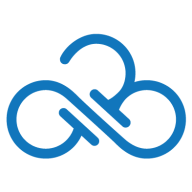

Find out what your peers are saying about Palo Alto Networks, Wiz, Microsoft and others in Cloud Workload Protection Platforms (CWPP).

SentinelOne Singularity Cloud Security protects cloud workloads, offering advanced threat detection and automated response. It integrates seamlessly with cloud environments and secures containerized applications and virtual machines against vulnerabilities.
SentinelOne Singularity Cloud Security is renowned for its efficiency in mitigating threats in real-time. The platform integrates effortlessly with existing cloud environments, ensuring robust cloud security management with minimal manual intervention. Securing containerized applications and virtual machines, it excels in threat intelligence and endpoint protection. However, improvements are needed in performance during high workload periods, and more integrations with third-party tools and better documentation would be beneficial. Users often find the installation process complex, support response times slow, and the dashboard's navigation unintuitive.
What are the key features of SentinelOne Singularity Cloud Security?In specific industries, SentinelOne Singularity Cloud Security is implemented to safeguard critical data and infrastructure. Organizations in finance, healthcare, and technology depend on its real-time threat detection and automated response to protect sensitive information. Its ability to secure containerized applications and virtual machines is particularly valuable in dynamic environments where rapid scaling is necessary.
Sonrai Security provides comprehensive cloud security solutions for data security, cloud governance, and vulnerability management. It identifies and mitigates risks, monitors access privileges, enforces compliance, and generates detailed reports.
Organizations leverage Sonrai Security to secure multi-cloud environments and automate security policies. It enhances cloud infrastructure security by tracking data flow, detecting anomalies, and reducing vulnerabilities. Users value its robust capabilities in safeguarding sensitive information and ensuring regulatory adherence.
What are the key features?Sonrai Security is widely implemented across industries such as finance, healthcare, and technology. Organizations in these sectors benefit from its robust cloud security features to protect sensitive information and meet stringent regulatory requirements. It plays a key role in enhancing security measures and streamlining compliance processes.
We monitor all Cloud Workload Protection Platforms (CWPP) reviews to prevent fraudulent reviews and keep review quality high. We do not post reviews by company employees or direct competitors. We validate each review for authenticity via cross-reference with LinkedIn, and personal follow-up with the reviewer when necessary.